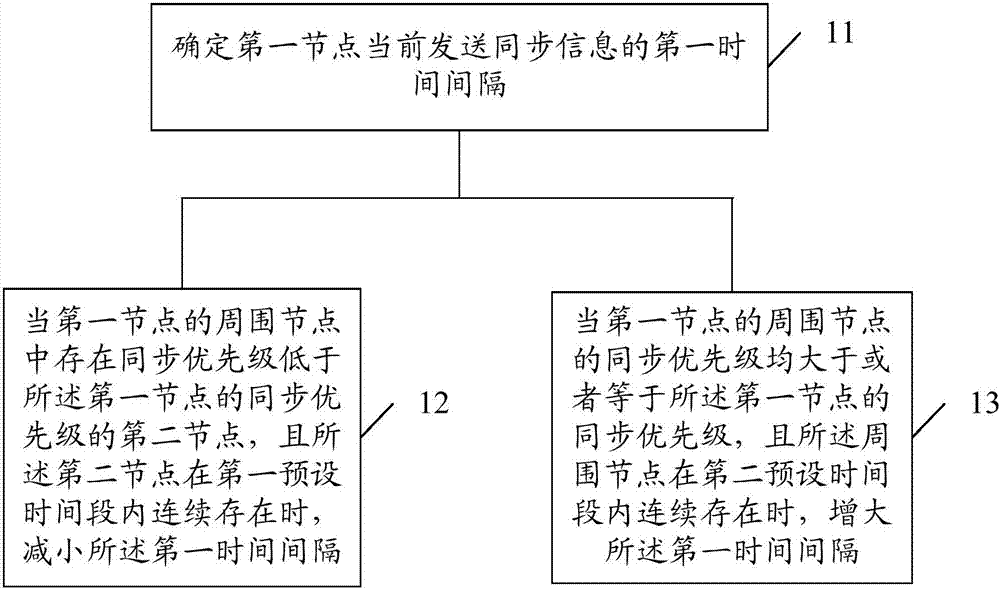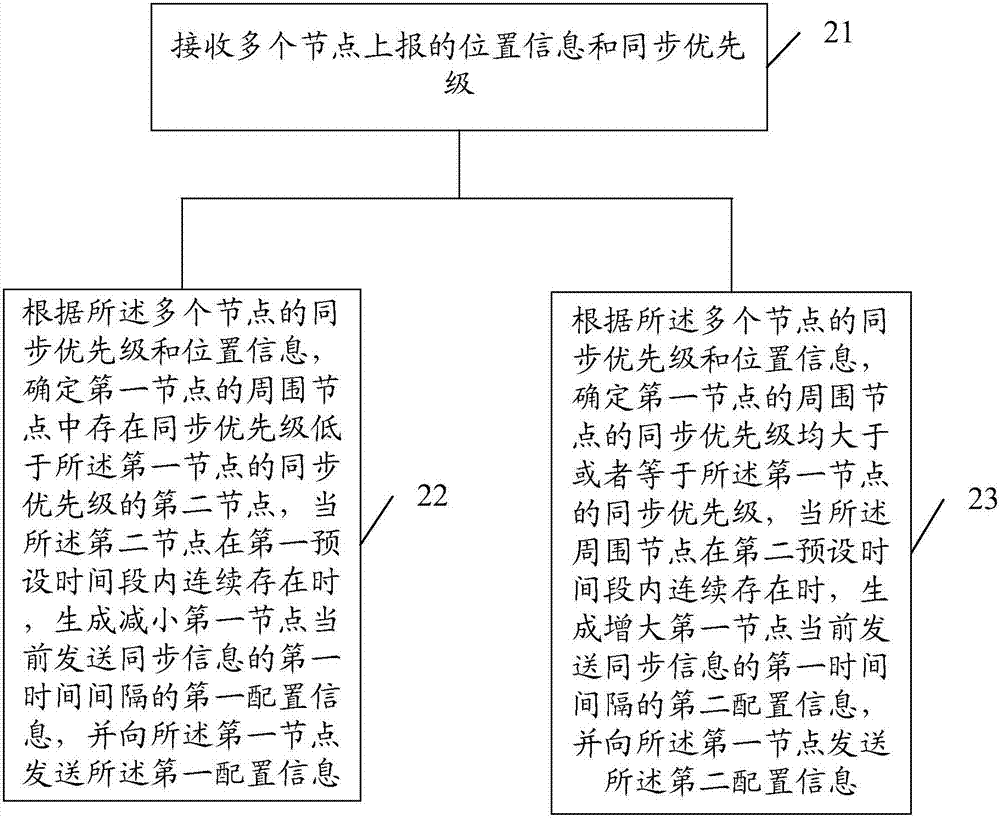Method and device for processing transmission time intervals of synchronization information
A technology for sending time interval and synchronization information, which is applied in the field of communication and can solve problems such as the inapplicability of the method of sending synchronization information
- Summary
- Abstract
- Description
- Claims
- Application Information
AI Technical Summary
Problems solved by technology
Method used
Image
Examples
no. 1 example
[0118] Such as figure 1 As shown, the first embodiment of the present invention provides a processing method for sending time intervals of synchronization information, which is applied to the node side, and the processing method includes:
[0119] Step 11, determining the first time interval at which the first node currently sends synchronization information;
[0120] Step 12, when there is a second node whose synchronization priority is lower than that of the first node among the surrounding nodes of the first node, and the second node exists continuously within the first preset time period, decrement small for the first time interval.
[0121] The situation corresponding to this step shows that there are nodes with a lower synchronization priority than the first node in the surrounding nodes, and the first node may be used as the synchronization source reference node of the second node with a lower priority. At this time, the first node needs to Increase the sending freque...
no. 2 example
[0156] In order to better achieve the above purpose, the present invention also provides a second embodiment for the method in the first embodiment—the base station determines whether to adjust the first time interval and how to adjust the first time interval, as figure 2 As shown, the second embodiment provides a method for processing the transmission time interval of synchronization information, which is applied to the base station side, and the processing method includes:
[0157] Step 21, receiving location information and synchronization priority reported by multiple nodes;
[0158] Step 22, according to the synchronization priority and location information of the plurality of nodes, determine that there is a second node whose synchronization priority is lower than the synchronization priority of the first node among the surrounding nodes of the first node, when the second When the node exists continuously within the first preset time period, generating first configurati...
no. 3 example
[0193] Such as Figure 5 As shown, the third embodiment of the present invention provides a processing device for sending time intervals of synchronization information, which is applied to the node side, and the processing device includes:
[0194] A determination module 51, configured to determine a first time interval for the first node to currently send synchronization information;
[0195] The first adjustment module 52 is configured to: when there is a second node whose synchronization priority is lower than the synchronization priority of the first node among the surrounding nodes of the first node, and the second node is within the first preset time period When present continuously, reduce said first time interval;
[0196] The second adjustment module 53 is configured to: when the synchronization priorities of the surrounding nodes of the first node are greater than or equal to the synchronization priority of the first node, and the surrounding nodes exist continuousl...
PUM
 Login to View More
Login to View More Abstract
Description
Claims
Application Information
 Login to View More
Login to View More - R&D
- Intellectual Property
- Life Sciences
- Materials
- Tech Scout
- Unparalleled Data Quality
- Higher Quality Content
- 60% Fewer Hallucinations
Browse by: Latest US Patents, China's latest patents, Technical Efficacy Thesaurus, Application Domain, Technology Topic, Popular Technical Reports.
© 2025 PatSnap. All rights reserved.Legal|Privacy policy|Modern Slavery Act Transparency Statement|Sitemap|About US| Contact US: help@patsnap.com



